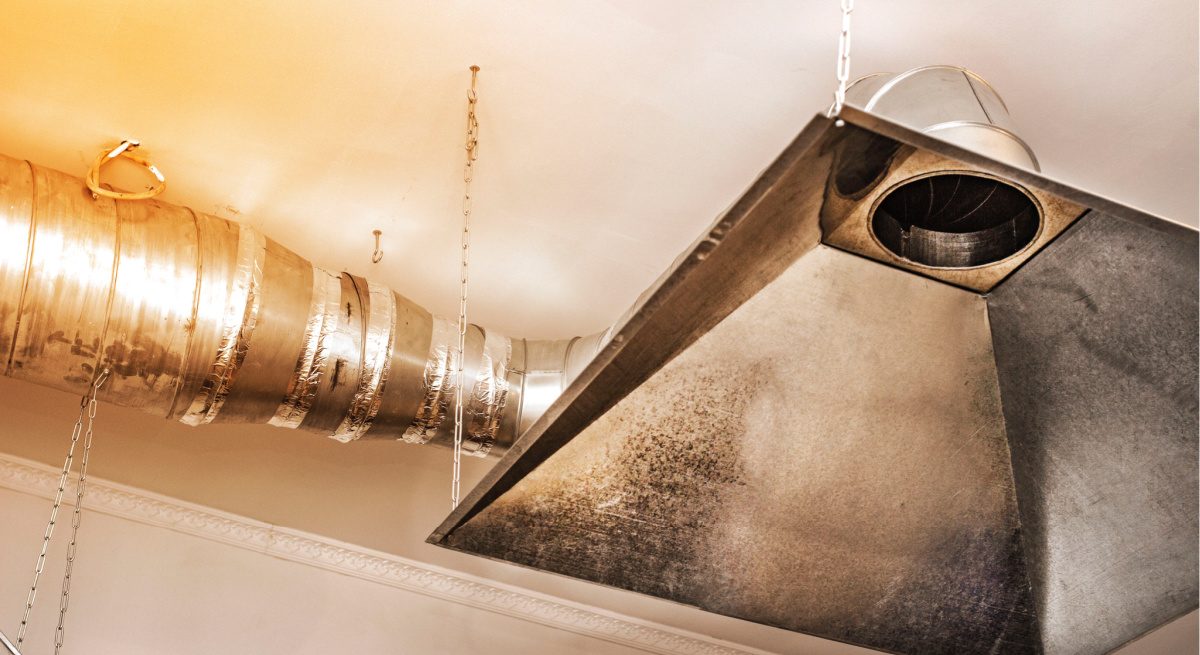How Restaurants Can Respond to New COVID-Ventilation Standards
4 Min Read By Danny Miller
In the wake of the COVID-19 pandemic, the Centers for Disease Control and Prevention (CDC) recently issued new guidelines for businesses covering a wide range of actions for creating a safe environment for workers and the public as businesses reopen. Among them are recommendations for how best to reconfigure HVAC systems to provide enhanced ventilation to assist in mitigating the transmission of COVID-19 and other contagions.
Restaurant owners may be thinking “With everything else we are doing to get our restaurants reopened, now we have to deal with ventilation?” The short answer is – it depends.
Restaurant owners may be thinking “With everything else we are doing to get our restaurants reopened, now we have to deal with ventilation?” The short answer is – it depends.
The CDC guidelines are only recommendations. Restaurant owners could choose to ignore the guidelines completely or push them to the back burner to deal with later. However, the role of HVAC ventilation in achieving a suitable environment for the public is gaining widespread awareness.
In early July 2020, a group of 239 scientists from 32 countries warned the World Health Organization (WHO) that the Coronavirus spreads mainly through the air. The WHO responded quickly and confirmed that these scientists are correct.
On July 22rd news broke about a University of Nebraska study where researchers found evidence that COVID-19 can be spread through normal speaking and breathing, not just coughing and sneezing. The research also found that the virus can travel distances far greater than the six feet urged by social distancing guidelines.
A New York Times report said that airborne transmission would have several implications for the way health officials are fighting the pandemic, as authorities could mandate changes that could mitigate the risk. Face masks could be required in all indoor spaces. Changes to ventilation could also be enforced as a result.
The key words are “mandate” and “enforce.” The scientific community is going to inform public policy on this issue. If guidelines are deemed to be inadequate, the states will not hesitate to convert these to enforceable mandates.
The first evidence of this shift from guidelines to mandates appeared when New York Governor Andrew Cuomo issued regulations in July that retailers and mall operators need to meet in order to reopen their businesses in the state of New York.
MSN-News covered the story this way – “In order to reopen, malls must have MERV-13 or the highest rating compatible with the system – but no less than a MERV-11 rating. They must also have ventilation protocols, such as increased outdoor air, reduced re-circulation, longer system run times and frequent filter checks.”
New York has just recently reopened restaurants for outdoor dining only. It is highly likely that when indoor dining is allowed, restaurants will face the same enhanced ventilation and filtration mandates as the retailers and shopping malls.
Connecticut began reopening restaurants at 50 percent capacity back in mid-June. Operators must self-certify through the state’s website that they are in compliance with numerous requirements including the following related to ventilation – “For facilities with central ventilation systems, increase ventilation rates and increase the percentage of outdoor air that circulates into the system where possible.”
The science is trending toward more, not less, concern about airborne transmission. The public health agencies are saying that increasing the amount of ventilation is an important factor in reducing the transmission of the virus. The politicians and agencies are responding to the advice of these agencies. It is therefore safe to assume that enhanced ventilation will become increasingly mandated for restaurants as a pre-requisite for reopening.
The days of indoor dining as we have known it are in the past. The future requires facing the reality that fresh air is critical to public health and compliance will not be optional.
What are restaurant operator options when ignoring the guidelines is no longer an alternative?
Compliance can come in only two forms. Manual adjustments or automated adjustments via a suitable technology. It’s that simple. The HVAC systems serving most restaurants are equipped with dampers and controls that can be adjusted to increase the amount of ventilation. Increasing the run time means changing schedules in the thermostats. The vast majority of restaurant operators currently have no choice but to send technicians out to every restaurant to make manual adjustments to every HVAC unit.
The cost of COVID-19 compliance using technicians is staggering if a restaurant operator has hundreds or thousands of locations and thousands of HVAC units. Technology that allows remote configuration of the outside air damper systems and operational schedules is clearly the preferred approach.
Unfortunately, most restaurants do not have modern building automation or energy management systems. Those that do, will likely have the ability to make schedule changes, but it is rare for them to have direct control over the ventilation components of the HVAC system. They simply do not reach far enough into the HVAC appliances.
There are technologies available to restaurant operators that can facilitate automated adjustments to the ventilation systems in the midst of a pandemic. Once they are deployed, post-pandemic adjustments can be made to return to normal. Should there be another pandemic in the future, compliance can be achieved in a matter of minutes or hours at very little cost.
What would it cost to automate a restaurant with this kind of technology? Depending upon the size of the restaurant and the number of HVAC systems involved it might cost $5,000 to $12,000 per location.
Yes, that is also a staggering cost. The good news is that some of these technologies are subsidized by the local utilities because of the energy savings they produce. These subsidies can typically offset 20 percent to 50 percent of the cost. There are also unique funding mechanisms available to eliminate the upfront capital requirement. This is an important consideration in light of the many competing improvements that restaurants must pay for in response to COVID-19. If your restaurant facility lacks the in-house skills, it is also possible to outsource the management and monitoring of the facilities for a monthly fee.
The days of indoor dining as we have known it are in the past. The future requires facing the reality that fresh air is critical to public health and compliance will not be optional. It also comes at a price regardless of how you decide to comply.


